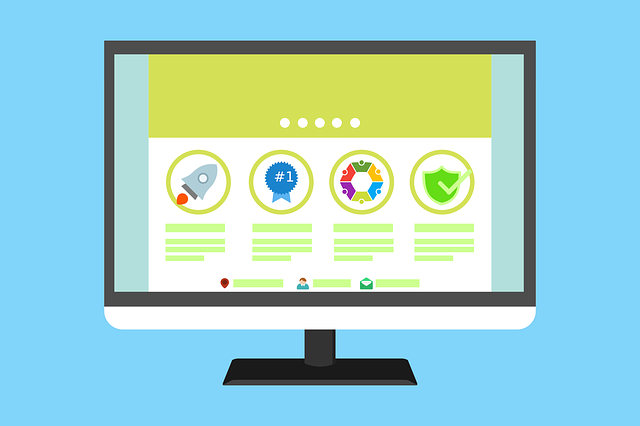Introduction
Customers now have a slew of expectations, including real-time resolutions (they don't want to wait days for a solution), contextual service (all service agents they interact with should be aware of their situation), and self-service options (don't force them to talk to someone if they don't want to).
This is great for the customer because we are giving them more power. On the other hand, it increases the pressure on customer service teams and can lead to a sense of being underequipped.
When customer service teams fall short of expectations, it's usually because service reps send out generic messages, leave customers on hold, and repeatedly ask the same questions. As a result, customers are treated as numbers rather than individuals. Ultimately this leads to our worst nightmare: a poor customer experience.
How do you empower your customer service team to deliver an authentic, customer-first experience consistently?
In comes Service Hub. Service Hub is a customer service platform that allows you to prioritize your customers. It's a simple, connected platform that enables you to provide genuine service.
In the previous blogs, we discussed HubSpot’s Marketing Hub and Sales Hub, go check them out for more clarity on today's discussion.
Help Desk

Customer service representatives have a difficult job. All they want to do is solve customer issues accurately and efficiently. Still, the confusion of multiple channels, a lack of a systemic prioritization method, and limited context frequently prevent them from accomplishing this goal.
What do customer service representatives require to provide a pleasant customer experience? A help desk.
A help desk is a system that enables teams to receive, triage, troubleshoot, solve, and improve on customer issues. It serves as the foundation for outstanding customer service.
With help desk assistance, your customer service representatives can concentrate on what is most important: providing a delightful experience for your customers.
A help desk has five functions: intake, triage, troubleshooting, solving, and improvement.
Intake
Intake is the process by which you receive support inquiries.
Intake channels vary depending on your customers and industry, but the four most common methods are phone, email, live chat, and forms.
Being available on multiple channels simultaneously may appear to be a daunting task, but with the right help desk, you can make it work. When and how to use which medium is determined by staffing, urgency, and context.
Phone support is best used when customers are attempting to solve urgent or complex problems. Phone support enables your customer service representative to provide highly personalized, real-time assistance to your customer. Phone support, on the other hand, consumes a significant amount of time for both your customer service agent and your customer, making it one of the more expensive mediums.
One of the most popular support channels is email. Email is best used when assistance is not required immediately, as it sometimes necessitates some back-and-forth. Email is useful because it allows screenshots and another context to be included as needed, and it provides a paper trail.
Live chat combines the immediacy of calling with the convenience of email. It should be used when customers have immediate but simple questions. Live chat is efficient because it allows customer service agents to assist multiple customers at the same time. However, as with email, it can be difficult to convey appropriate messaging via text rather than a phone call.
Forms are useful if you don't have the resources to staff phone or live chat support. Forms typically generate an email or phone call, allowing the customer to specify the best way to be contacted. Forms, like email, may have a longer wait time for your customer to receive their response; therefore, they should not be used if immediate assistance is required.
Triage
After receiving an inquiry via any of the channels you provide, the next step is to triage it. When you triage an inquiry, you categorize it by topic or priority and route it to the appropriate person or team.
Two triage steps
- Organize
- Prioritize
Troubleshoot
Understand the problem.
To better understand the problem, request a specific example of where your customer is stuck. Can you reproduce the problem? Screenshots and animated gifs are excellent resources in this case.
Look for relevant context.
Gather relevant context once you've determined your customer's goal. Examine their CRM records. Have they mentioned this before? If this is the case, contact the agent who previously assisted them to see if you can obtain any additional information. Are there any other customers who are having the same problem? Ask your customer questions, but avoid asking questions that can be easily answered through quick research. Putting more work on your customer means they will have to work harder to get their problem resolved, which is a leading cause of customer disloyalty.
Determine the issue.
It's time to diagnose the problem using what you've learned from the relevant context. Remember that successful solutions gave the customer a measurable result. While obtaining information from another internal party may be necessary, providing your customer with a viable workaround in the meantime can be beneficial. However, keep in mind that workarounds can sometimes cause more trouble than they solve.
Solve
After you've troubleshooted, make your solutions clear to your customer.
Make sure you can answer the following three questions when preparing the presentation of your solution:
- Does the solution assist the customer in achieving their goal?
- Is the client satisfied with the solution?
- Are they prepared to work on their own?
Successful solutions ensure that your customer not only continues to work, but also continues to support your product, service, and you, their champion problem solver.
Improvement
Consider each support request an opportunity to improve your product or service. Take detailed notes for each inquiry so that your team can gain a better understanding of the customer's pain and how to effectively respond.
Create reports on inquiries received, inquiries closed, inquiry category, customer effort score, and response time to improve the customer experience.
The number of inquiries received per day, week, or month can help you determine your staffing requirements. Furthermore, these reviews can detect inquiry spikes, which may indicate a critical issue that requires your immediate attention.
Knowledge Base

If you're like the majority of people, you looked for self-service documentation online. Self-service options, such as online knowledge base articles, are preferred by 76 percent of customers over speaking with an agent over the phone.
When customers prefer self-service, your customer service agents have more availability, saving your company money on staffing costs and allowing your customers to get the information they need.
Let's look at one of the most common forms of self-service: a knowledge base. A knowledge base is a library of articles about a particular product or service.
The advantages of a knowledge base include:
- Instant answers: no more waiting on hold for what feels like hours.
- Scalable FAQ responses: no more repeating your hours of operation for the tenth time.
- Reducing support volume for repetitive questions: If customers can find answers online, there is no need for one-on-one assistance.
- Agents can answer questions faster: customers can be directed to pre-written resources as needed.
A customer has a problem. They use the internet to find a solution, either by typing their question into a search engine or by visiting the company's website.
Regardless of the approach, they all end up in the same place: your company's knowledge base. They search for an answer in the knowledge base, and one of two things happens: they either find a suitable answer or realize they require additional assistance.
Great if they find an appropriate answer! Your task is completed. If the knowledge base does not fully answer their question, they are directed to one-on-one services, such as a phone number or live chat.
A live agent will then assist them in obtaining an appropriate response.
During this process, the live agent uses this interaction to inform future self-service offerings by asking, "Could this problem have been solved through a knowledge base article?" The learnings from one-on-one interactions are essentially used to improve self-service offerings.
Customers can solve their problems without having to contact customer service by implementing a self-service strategy. Self-service eliminates a large portion of the friction associated with customer service.
The benefits are mutual: no more long wait times for your customers, and no more answering the same questions ten times a day for your customer service agents. Create a self-service strategy with HubSpot's Knowledge Base tool to assist your customers in helping themselves.
Customers Portal

A customer portal is a secure location where customers can view, open, and respond to support tickets.
Please keep in mind that the customer portal is only available to Service Hub Professional and Enterprise subscribers.
This feature not only benefits your customers but also benefits your support team. Customers will no longer need to create duplicate tickets or call in frequently to inquire about the status of their tickets.
The best part is that you don't need developer resources to create a secure customer portal that is automatically tailored to your brand, in the language of your choice, and on a custom domain.
When your customers have longer ticket cycles, or if your company simply wants to improve your customers' ability to self-serve, a customer portal is ideal.
If you're still unsure whether adding a customer portal to your service strategy is a good idea, consider the following questions: Do your customers need to…
- Know the status of their support tickets without having to contact them?
- How do they respond to the conversation on their own terms?
- Access previous responses from your support team?
- View useful documents pertaining to a support inquiry?
- Have confidence that your support team is working to resolve their problem?
Feedback

If you've ever struggled to create an effective customer feedback process, HubSpot can help.
The HubSpot Feedback Framework is a customer feedback program that assists you in establishing listening points, understanding customer sentiment and improving customer experience.
There are three industry-standard surveys available to assist you in gathering valuable feedback.
Net Promoter Score determines whether a customer is likely to recommend your product or service to a friend.
Similarly, Customer Satisfaction Scores allow customers to express their satisfaction with their experience.
And Customer Effort Scores indicate how simple it was to resolve a problem with your product or service.
These industry-standard surveys are fantastic because they are micro surveys — short, simple, and simple for customers to complete.
Net Promoter Score
Net Promoter Score is the best feedback survey to use if you want to understand how customers feel about your company as a whole.
The Net Promoter Score, or NPS, is a customer satisfaction metric that determines how likely your customers are to recommend your company to a colleague or friend. NPS is a metric that businesses use to assess and improve customer loyalty.
NPS differs from other benchmarks, such as Customer Satisfaction Score or Customer Effort Score, in that it assesses a customer's overall sentiment toward a brand rather than their perception of a specific interaction or purchase.
NPS asks, "How likely are you to recommend this brand to a friend or colleague on a scale of 0 to 10?"
There are three types of NPS responses.
- Promoters: Customers who answer 9-10. Promoters are enthusiastic, loyal customers who recommend your company to their friends and bring in new customers.
- Passives: Customers who answer 7-8. Passives are unconcerned. They received what they expected from your company and may become promoters, or they may switch to your competition; they generally have no strong feelings one way or the other.
- Detractors: Customers who give a score of 0-6. Detractors are dissatisfied customers. Not only are you at risk of losing them, but they may also harm your brand by telling others about their bad experiences.
Subtract the percentage of detractors from the percentage of promoters to calculate NPS. The resulting figure represents the likelihood that your typical customer would recommend your company to a friend.
Customer Satisfaction Scores
Customer satisfaction surveys, or CSAT, help you understand your customers' satisfaction levels at specific points in time.
A CSAT survey will typically ask, "How happy were you with X experience?" followed by a three-point scale with smiley faces: happy, neutral, or sad.
Customers find it incredibly simple to complete CSAT surveys. They don't have to waste time deciding on a number; instead, they have three distinct options.
Unlike Customer Effort Score and Net Promoter Score surveys, which use generic language, CSAT questions address a specific experience or interaction. CSAT differs from NPS in that it assesses satisfaction following a specific event rather than general sentiment.
Furthermore, while both CSAT and Customer Effort Score are touchpoint surveys, which means they measure a specific point in time, CSTAT measures satisfaction while CES measures ease of application or use. Customer Satisfaction Surveys, like NPS and CES, are most effective when sent immediately following a specific interaction.
Customer Effort Score
Consider using the Customer Effort Score to determine how well your customer support team is performing. Customer Effort Score (CES) is a customer service metric that measures a service's user experience.
Customers rate their experience from "Very Difficult" to "Very Easy" on a seven-point scale. This determines how much effort was required to use the service and how likely they are to use or pay for it in the future. The Customer Effort Score is beneficial for several reasons.
To begin with, it is highly specific and actionable, identifying strengths and weaknesses in various interactions throughout your business.
Furthermore, CES outperforms Customer Satisfaction and Net Promoter surveys in terms of forecasting future spending behavior. If your sales team is talking about future opportunities, reviewing CES is a good place to start.
Similarly, CES is a strong predictor of referral likelihood, with 81% of customers reporting high customer effort saying they would tell others negatively about the company.
Conclusion
There you have it, some of the Key Features of the Service Hub. These are just the exterior of the Service Hub, there are a plethora of more tools the Service Hub presents. Find out about all of them by doing the HubSpot Service Hub Software Certification.
So, yes! It is worth it, if you give it some time you’ll be able to grasp an understanding of the Service Hub.






.png)














 ebarak@inbouncy.com
ebarak@inbouncy.com Schedule a Meeting
Schedule a Meeting Ebarak Hossain
Ebarak Hossain
Submit Your Two Cents